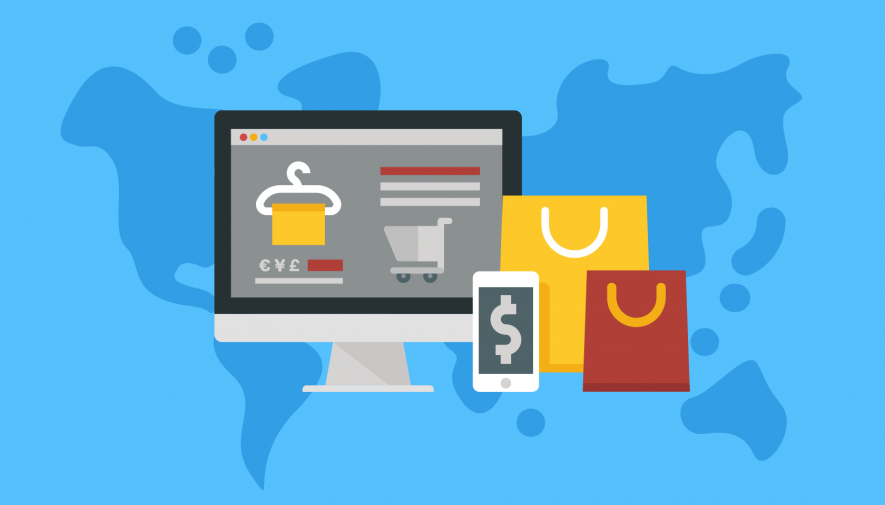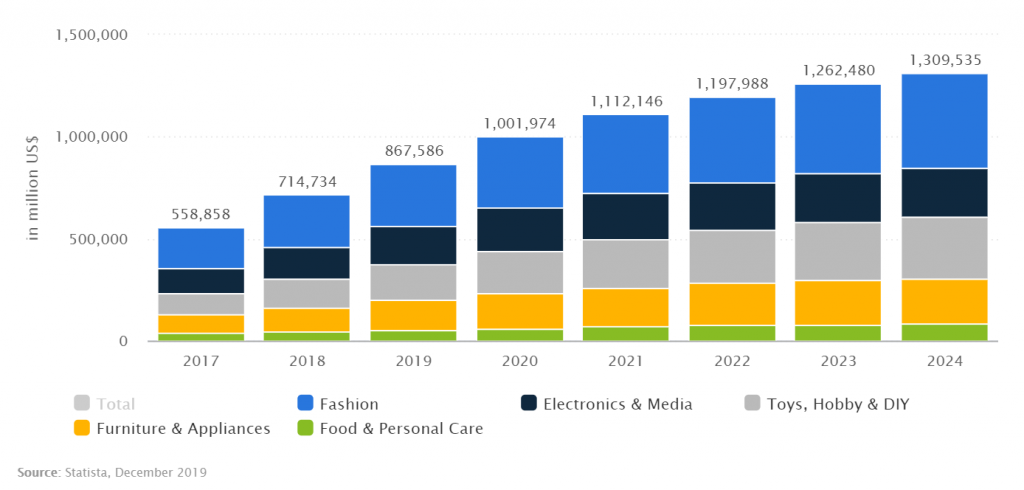
eCommerce growth has been on the rise for the last few quarters and eCommerce revenue makes up 10.7% of U.S. retail sales. As Amazon controls 47% of all U.S. eCommerce transactions, the title of the world’s largest retails shifted from Walmart to Amazon. Although Amazon is leading the pack in North America, many retailers and holding their ground by blend physical channel with the eCommerce channel, while the international eCommerce space is seeing tremendous growth.
1. Love, Hate Amazon
Amazon took the #1 position as the largest retailer in May and has disrupted books, DVDs, eCommerce, web and cloud, groceries, and now logistics. Amazon’s major investment in shipping will displace Fedex, UPS and U.S. Postal Service in volume of packages delivered. Consumers came to love the company that provided next day delivery for billions of products from their smartphone.
However, Amazon faced local opposition in the HQ2 expansion, excessively high injury rate at the warehouse of 9.6% per 100 full time employee as it pushes the boundaries with automation, to claimed political pressure for not landing the $10 billion JEDI contract with Defense Department. We will continue to see opposition and blunders as Amazon tries to disrupt the status quo.
Expect Amazon to shake up and disrupt the digital industry in 2020, starting from the new Amazon Healthcare as Amazon enters the $3.6 trillion/year industry.
2. Growth of Physical Stores
Done right, physical stores will continue to support and fuel the eCommerce growth. As we see traditional malls shut down or transform to co-working office environment, however the physical B&M presence is an asset to many eCommerce retailers that are looking to expand and get closer to their audience.
Stores such as ULTA Cosmetics that managed to build a 31 million strong loyalty program by provide web-instore personalization and have seen 60% of eCommerce visit come from their Ulta’s mobile app. While Amazon acquired WholeFoods in 2017 to get a better foothold in the physical space and support the Amazon Fresh program, and Fabletics Apparel, a eCommerce player is on an expansion spree with over 38 stores in US. With the expansion of eCommerce companies into the physical retail space, more and more consumer data is being captured, consolidated and used to help fuel eCommerce.
We will continue to see established eCommerce companies improve their foothold and getting closer with their customers through store expansions, or using existing store data to create a seamless personalized shopping experience.
3. Delivery Wars
Amazon shipped over 5 billion parcels with its Prime Service in 2018, owns over 60 planes, will soon have 160,000 trucks zipping around and cut ties with FedEx as their primary carrier. As eCommerce continues to grow as it has been in the last three quarters, shipping cost continuing to rise along side and retailers are looking for more efficient ways to speedy delivery and meet consumer’s expectations.
The competition of getting products faster and cheaper to consumers is a global phenomenon as eCommerce players as we see this being played out in India and China as we see impressive sell through in Asia as Singles Day 2019 concluded with $60 billion versus Black Friday of $7.4 billion, and the eCommerce sales requires a shipper or a seamless physical delivery mechanism like a physical store. Thus, retail giant Walmart invested $16 billion to acquire 77% of Flipkart in India to increase their eCommerce footprint overseas.
4. Go International for the Growth
North America’s eCommerce is on a single digit growth year over year, where else China is boasting 21.4% year over year for 2019. In fact that 42% of the world’s eCommerce transactions happen in China – a market larger than the U.S., the U.K., France, Germany and Japan combined. The eCommerce market in China is $1.94 trillion, it is three times bigger than the US market.
The growth of China’s eCommerce is not limited to the borders of the Great Wall but it extends beyond that. Alipay is a prominent payment solution in China and with that, Chinese shoppers who used Alipay spent €1,273 ($1,403 USD) in French stores during Golden Week, 15.5% more than the average US shopper will spend on gifts, travel and entertainment for the entire 2019 Holiday season ($1,284 USD).
Expect China to help shape the eCommerce due to the scale and adoption of digital trends. Wechat Pay and Alipay combined have 1.7 billion users, 10 times more than Apple Pay. China boasts a 100% adoption rate for mobile payments, where else U.S. consumers penetrtion rate is only 65% for mobile payments.

Source: Statista
5. Interactive Emails
Animated images in emails is nothing new. However when the tipping point for interactive compatibility came when Google announced that AMP and JavaScript would be supported in Gmail apps. Similarly, Microsoft announced AMP support for Outlook.com and has turned Outlook into a Progressive Web App (PWA).
Consumers and buyers will do everything from choosing product sizes to browsing carrousels, opening menus, choosing colors, leaving ratings and reviews, etc. – without ever leaving their inbox, the email or mail app.
